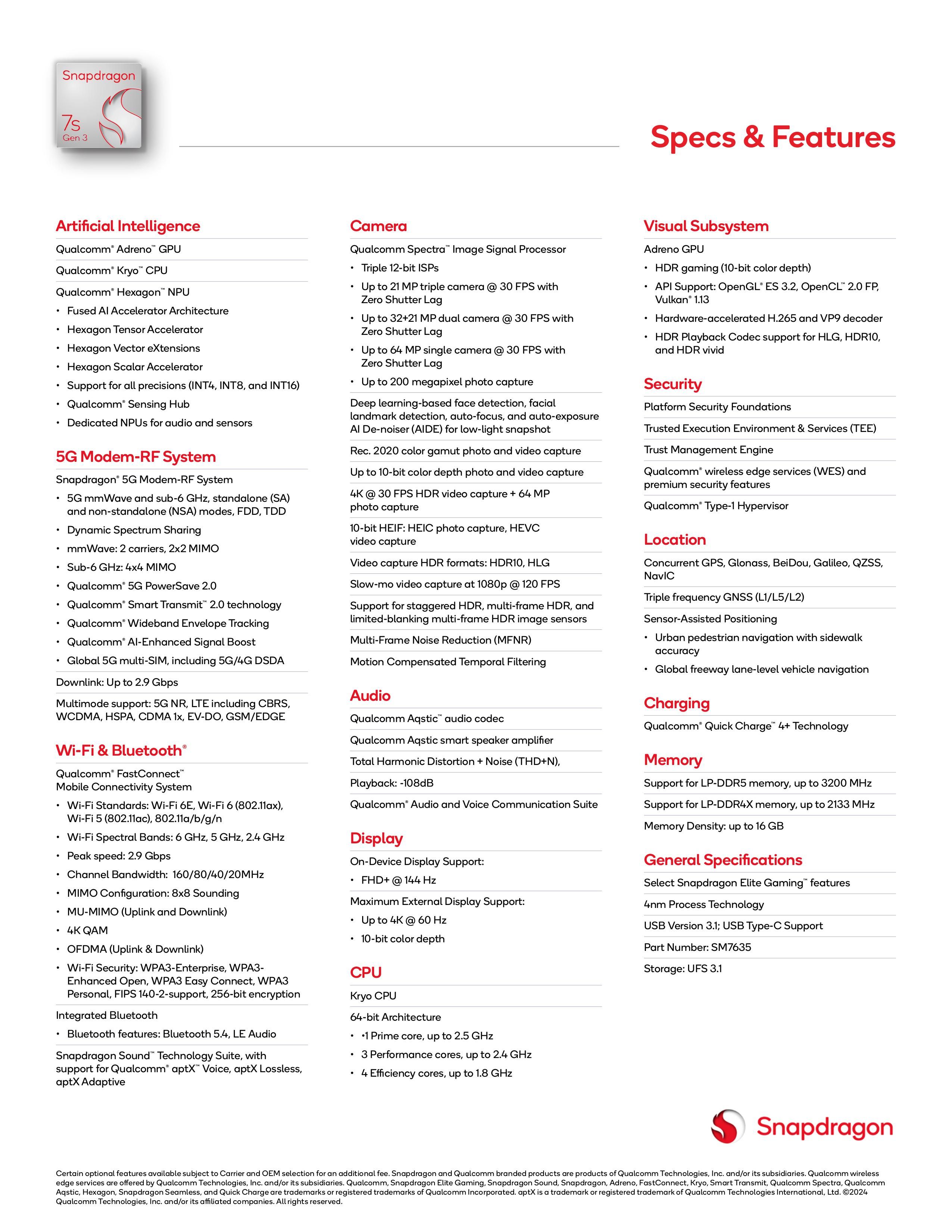Summary
- Qualcomm has unveiled the Snapdragon 7s Gen 3, offering on-device AI skills, faster CPU performance, and improved power savings for midrange Android phones.
- The chip features a 1x3x4 architecture with Cortex-A720 and A520 cores, bridging the gap between the Snapdragon 7 and 7+ Gen 3.
- On-device AI remains a priority for Qualcomm, with full support for Baichuan-7B and Llama 2 with this chip, potentially bringing advanced features to lower price points.
Google’s latest Tensor chipset might be the thought on everyone’s minds at the moment, what with the Pixel 9 just days away from hitting store shelves, but that doesn’t mean Qualcomm is sitting out of this newscycle. While we’ll have to keep waiting for this year’s forthcoming Snapdragon 8 Gen 4, the company is ready to unveil its latest midrange SoC, the Snapdragon 7s Gen 3. And as is standard for the S-series at this point, this chip is all about bringing features from higher-end components down to more affordable prices.
Qualcomm once promised its naming structure would no longer be confusing, but if you aren’t dialed into everything Snapdragon, knowing the difference between this chip and the Snapdragon 7+ Gen 3 announced earlier this year requires knowing what every character in the name means. Much like the Snapdragon 8s Gen 3 before it, this chip is looking to retain the most important elements of the 7 and 7+ Gen 3 while dropping down in price. We’re still talking about midrange phones, but it’s the sort of devices you might find in the $300 to $400 price range, not the $400 to $500 space.
And these days, the “most important elements” usually means AI skills — at least in the eyes of Android OEMs. Compared to the Snapdragon 7s Gen 2, which was primarily featured in devices from Realme and Xiaomi, along with this year’s Moto Edge 50 Fusion in Europe, Qualcomm is claiming 20 percent improved CPU performance, 30 percent improvements to AI performance, and 12 percent improvements to overall power savings. Throw in a new Adreno GPU that Qualcomm says can deliver up to 40 percent faster gameplay, and this is sounding like a pretty impressive chip — assuming the money’s right, of course.

Related
Qualcomm’s rumored price hike could be good thing for Android users
Android’s mid-range market could heat up
Closer than ever to flagship-level performance
But at a price that doesn’t hurt your wallet
Digging into its specs sheet, Qualcomm’s latest 64-bit chip is using a fairly predictable 1x3x4 architecture. Both its prime 2.5GHz core and its three 2.4GHz performance cores are Cortex-A720s, while the four 1.8GHz efficiency cores are Cortex-A520s. That places it right in between the previous Snapdragon 7 Gen 3 chipsets, and closer to the more recent Snapdragon 7+ Gen 3 in terms of both power and core construction. Compared to the A78 and A55 cores found in the Snapdragon 7s Gen 2, it’s likely here where you’re finding that power-saving boost.

As ever, Qualcomm is pushing its on-device AI capabilities hard with this chip, thanks to its dedicated NPU. The Snapdragon 7s Gen 3 has full support for both Baichuan-7B and Llama 2, and presumably could be used to bring some of the on-device features we’re seeing on phones from Samsung to lower price points. Could next year’s Galaxy A-series join the world of Galaxy AI? With chips like these, it certainly seems like it’s a matter of when, not if.
But even if you don’t care about AI, this seems like yet another respectable midrange chipset from Qualcomm, a company so good at making SoCs these days, it’s almost easy to take it for granted. As for when you’ll see this chipset start to appear in smartphones, Xiaomi will be first up to bat with an announcement next month — potentially as early as IFA. Samsung is listed as a partner, though, which hopefully ensures a US-bound device rocking this particular chipset.
Source link


